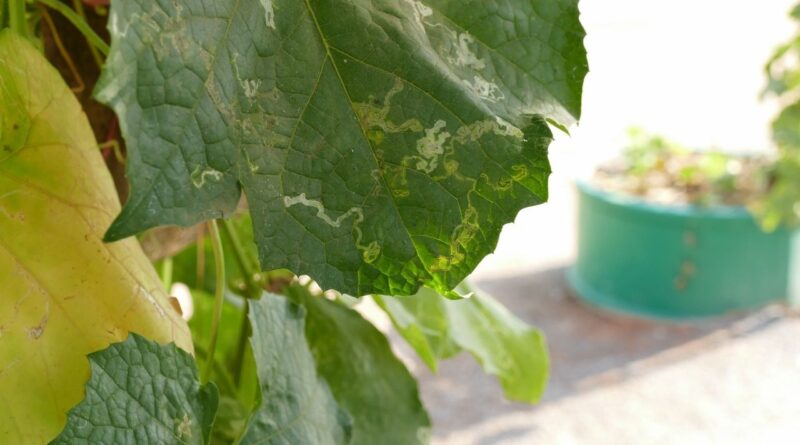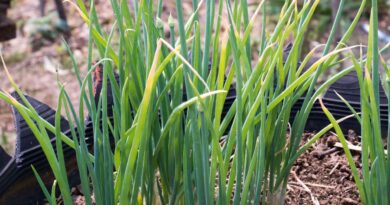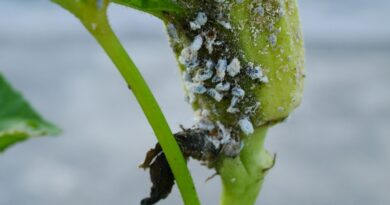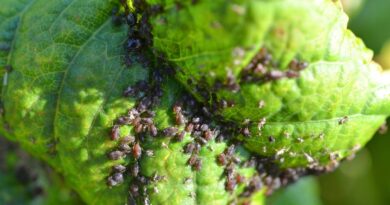An Introduction To Leafminers
What are leafminers?
Ever noticed silvery meandering paths in the leaves of your plants? Chances are you are dealing with leafminers. Leafminers are the larvae of some flies, beetles or moths which feed on the leaf tissues between the upper and lower surfaces of the leaves. The larvae of leafmining flies are worm-like maggots while larvae of leafmining moths are caterpillars. The term leafminers covers a variety of insects from different species. They include sawflies (order Hymenoptera), beetles and weevils (order Coleoptera), true flies (order Diptera) and moths (order Lepidoptera). Leafminers are protected from predators and insecticide sprays because they feed within the tissues of the leaves. Some types of leafminers feed in other parts of the plant such as the fruit surface and flower petals. As the larvae feed, they leave droppings, known as frass, inside the tunnels. The pattern of frass deposition, mine shape and type of host plant are useful to determine the species and instar of the leaf miner.
Leafmining flies
Leafminer flies are small (about 2mm long), often black to grey flies with yellow stripes and clear wings which look like small, hunched back house flies.The most common and troublesome leafmining flies come from the family Agromyzidae, where about 10% of the species are considered pests. The most significant pest genera are Liriomyza, Ophiomyia, Agromyza, Phytomyza, Napomyza and Melanagromyza. Some species have a high degree of host specificity while others attack many different species of plants. The most common species of leafminers include:
-
- Liriomyza trifolii (serpentine leaf miner)
- Liriomyza sativae (vegetable leaf miner)
- Liriomyza brassicae (cabbage leaf miner)
- Liriomyza huidobrensis (pea leaf miner)
These leafmining flies are serious pests of vegetables and ornamental plants worldwide and they are highly polyphagous i.e. they attack many different species of plants. The main host plants include brassicas, potato, tomato, okra, cucumber, onion, pigeon pea, bell pepper, pumpkin, passion fruit, cowpea, common bean. Liriomyza bryoniae (tomato leafminer) and Pegomya hyoscyami (spinach/beet leafminer) are common in Europe, Asia and North Africa.
Leafmining flies Life Cycle
The adult female uses the needle-like ovipositor to lay up to 250 eggs inside the leaf tissue or just below the epidermis of the leaf, fruit or pods. The eggs are very tiny, greyish or yellowish white and slightly translucent. They hatch in about 3-10 days. After hatching the larvae tunnel through the mid-leaf tissue, feeding as they go and leaving wavy lines that are visible on the surface. The larvae mature within 2-3 weeks after passing through 3 larval stages. They then leave the leaf and drop to the soil to pupate. In some cases maggots pupate within the mines. Adult flies emerge after 4-15 days depending on the species. The average life cycle is approximately 21 days in warm conditions. It can also be as short as 15 days. The life cycle varies depending on the host plant and temperature. There are several generations per year.
Leafmining moths
There are about 3,200 species of leafmining moths. They are small with a wingspan of under 20mm hence the name micromoths. Leafmining moths belong to 4 principal families namely gracillariidae, douglasiidae, nepticulidae, tischeriidae, which all fall under the order lepidoptera. The caterpillars of these moths feed inside the foliage of their host plants, eating the soft plant tissue between the tougher upper and lower leaf epidermis. The pattern of the mine is fairly constant for a particular species of leaf miner. Leafmining moths tend to be quite specific to one or two host plants. Hosts include coffee, cotton, groundnut, soybean and citrus. Examples of leafmining moths include:
-
- Tuta absoluta (tomato leafminer)
- Phyllocnistis citrella (citrus leafminer)
- Lyonetia clerkella (Apple leafminer)
-
- Gracillaria syringella (Lilac leafminer)
- Acrolepiopsis assectella (Onion/leek leafminer)
- Cameraria ohridella (Horse chestnut leafminer)
Leafmining moths life cycle
Leafmining moths lay their eggs on or inside foliage of suitable hosts. The eggs can take about a week to hatch. After hatching the caterpillars tunnel through the internal leaf tissues. They go through four larval instars before maturing. The larvae of some species leave the mines and pupate elsewhere on the plant or in the soil. Some species pupate within the foliage. The pupae can take one to three weeks to emerge as adults depending on the climate. The entire life cycle can be completed in three to seven weeks. Some species have several generations a year.
Leafminer damage
Adult leafminers are small and therefore difficult to spot. The damage they cause is similar across species. Adults puncture leaves, in some cases fruits or pods to feed or to lay eggs. The puncture marks are white and are easily seen. They are the first signs of attack. These punctures may serve as entry points for disease-causing bacteria and fungi. The larvae feed between the upper and lower surface of the leaf making tunnels as they move along. Heavily infested plants can have 6 or more maggots per leaf, which results in blotches instead of tunnels. This will eventually cause shrivelling of the leaves and may result in complete defoliation of plants. Heavy attacks can also result in dying off of young plants. Heavy attacks reduce the photosynthetic capacity of the plant and affect the development of flowers and fruits. Pathogenic fungi and bacteria may also enter old tunnels causing the leaves to turn yellow and drop and fruits to rot before or after harvest. Leafminers also damage the cosmetic nature of the host plants.
Prevention and control
- Different techniques can be used to monitor leafminer activity. The first method is through observation. Small black and yellow adult flies can be detected flying closely around the plants or on the leaves. Yellow or blue sticky traps are used for monitoring and trapping adult leafminers. Pheromone traps attract and trap male leafmining moths when they are active at night. A monitoring technique used in the USA for fresh market tomatoes involves placing plastic trays beneath plants at several random places in the field. Mature larvae that drop from foliage accumulate on the trays and pupate there providing a measure of leaf miner activity. The presence and activity of natural enemies can also be used to monitor leafminers activity. Absence of pupae on leaves or in trays placed beneath plants, when new mines are present, is an indication that natural enemies are keeping leafminers controlled.
- Inspection of the leaf surface will reveal punctures of the epidermis and the greenish-white mines in the leaves. Feeding maggots will be found at the end of the mines. At the first sign of tunnelling, squeeze the leaf at the tunnel between two fingers to crush the larvae. When maggots have exited the mine to pupate, the mine will end with a small convex slit in the epidermis. Killing the larvae soon enough helps to reduce population and allows plants to survive minor infestations.
- All infested leaves and other plant material should be pruned and destroyed. New plants need to be inspected before planting to prevent introduction of pests.
- Solarisation can kill pupa in the soil. Soil solarisation is a method of controlling soil-borne pests by placing plastic sheets on moist soil during periods of high temperature. Transparent plastic allows a more effective heating of the soil than black or coloured one. Solarisation during hot months can increase soil temperature to levels that kill many disease-causing pathogens, nematodes, weed seeds and seedlings.The plastic sheet should be left on the soil 4-6 weeks. Solarisation does not leave toxic residues compared to applying pesticides.
- Healthy plants are able to outgrow and tolerate leafminer attacks. Maintain plant health using compost and other organic soil amendments and proper watering.
- Leafminers have many natural enemies, mainly parasitic wasps. The most efficient parasitic wasp for control of leafminig flies is Diglyphus isaea. This parasitic wasp is reared and sold commercially but smallholder growers have no access to the parasitic wasps. Improper use of broad spectrum pesticides disrupts the natural control resulting in major leafminer outbreaks. It is important to protect naturally occurring natural enemies.
- Biopesticides such as neem, spinosad and Bt (Bacillus thuringiensis) are ideal, as opposed to synthetic pesticides, because they have low toxicity to people, pets and pollinators and natural predators migrating in after their application.
- Spinosad is a bacterium derivative used mainly for controlling caterpillars, thrips and fruit flies. It also controls liriomyza leafminers. Once spinosad is ingested by the leafminers, it immediately halts feeding and will kill the larvae after a couple of days.
- Bacillus thuringiensis is a species of bacteria that lives in the soil. Bt is effective in controlling leafmining caterpillars. It makes proteins that block the digestive system of the caterpillars when they feed on plants sprayed with Bt. The infected pest will stop feeding within hours and will die from starvation or a rupture of the digestive system within days. Bt does not harm beneficial insects and it integrates well with other natural controls in integrated pest management systems.
- Neem oil or neem-based products are used for control of leafmining flies. Neem reduces the fertility and lifespan of flies. It also disrupts the development of the maggots. Neem oil can be applied as a foliar spray or as a soil drench.




